HARMONIC ENGINE DIY PCB: £8
These are also available on our ETSY and EBAY shops for EU customers.
Read more about buying from the EU HERE.
The circuitbenders.co.uk Harmonic Engine PCB is a clone of the E&MM Harmony Generator. This was a project originally designed by Paul Williams, and published in Electronics & Music Maker magazine way back in 1981. The circuit uses a 4046 Phased Locked Loop (PLL) to generate a squarewave oscillator output at harmonic intervals to the frequency of an input signal. The squarewave generated can be set to plus or minus up to three octaves from the input, and can also produce 3rd or 5th harmonies.
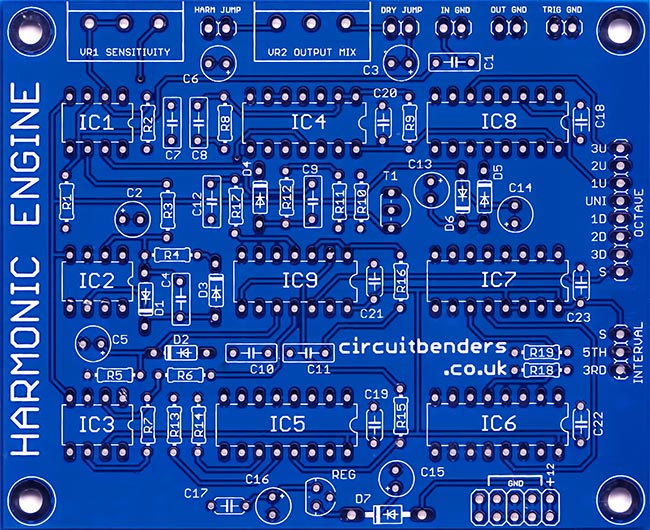
Thats the theory anyway. In practice the note tracking only works reliably if you use very basic waveforms at the input. If you use anything else, then everything very quickly descends into a beautiful kind of chaos, with all kinds of bizarre gurgling digital squeaks and squeals vomiting forth. Its especially effective with percussion sounds, converting each hit into some kind of warped electronic splatter.
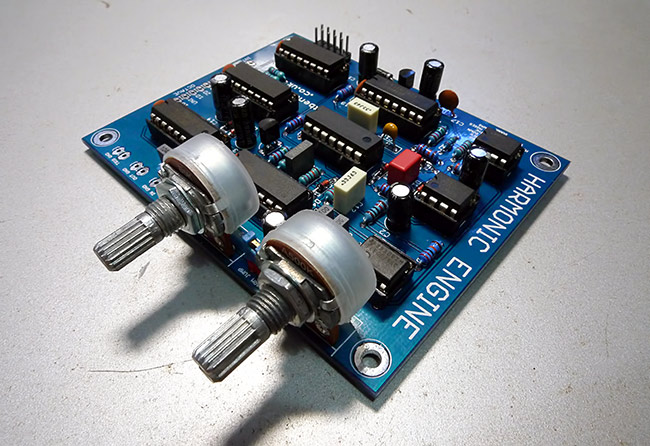
This is just the bare unpopulated PCB. We do not supply kits for the full build,
Theres nothing rare or very difficult to get hold of in this build, although the 4526 4-bit binary counter IC appears to be one of those little used 4000 series CMOS chips that aren't stocked by many component suppliers. It might take some searching to track these down.
Theres no setup or calibration involved, and theres nothing complex to go wrong, so as long as you are careful with your soldering theres no reason why this shouldn't be a beginners project.
The PCB has board mounted pots at the front and a eurorack power connector at the back, so it could easily be used as a modular synth module, but theres no reason that you couldn't use it as a stand alone effect in a desktop case, or wire the pots to the board so you could use it as a guitar pedal.
The standard unit operates best with line / instrument level signals. While it will probably work ok with modular input signals, you may need some kind of level boost on the output. You may be interested in our Dual Level Shifter module which is specifically designed to interface line level effects units into a eurorack modular.
The parts list and build guide can be downloaded from HERE.
The schematic can be found HERE.
Theres a thread about the Harmonic Engine on the Muffwigglers forum HERE.
Below you can find a couple of videos of this board in action. The first is some demos of the board mounted in a case and processing three different sources, a drum machine, a x0xb0x and a guitar thats already distorted through a fuzz pedal. You'll have to forgive the complete inability to play the guitar, and the somewhat dubious video quality.
The second video is a demo of the first prototype board. Its exactly the same as the final version
we have for sale here, only the pots weren't mounted on the board.
If you want to buy a board click on the Buy Now button below. Payments are processed via Paypal, but you can pay using a credit or debit card without having a Paypal account. If you want to pay using some other method, please get in touch via the CONTACT page.
EURORACK PANELS
We have a limited number of 10HP front panels available for Harmonic Engine eurorack modules.
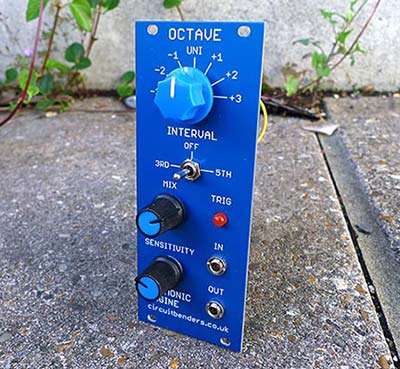
The panels are the same blue as the PCB and are made from PCB material. They include a hole for mounting a 5mm LED for the 'trigger' output, but this can easily be drilled out to accomodate a 3.5mm jack socket if you prefer. Only the panel itself is included
HARMONIC ENGINE EURORACK PANEL: £7
PCB BUILDS
If you build something interesting with one of these boards then let us know via the CONTACT page and we'll be happy to put up a photo and a link to your site here.

Harmonic Engine built into a 1/3rd rack width case.
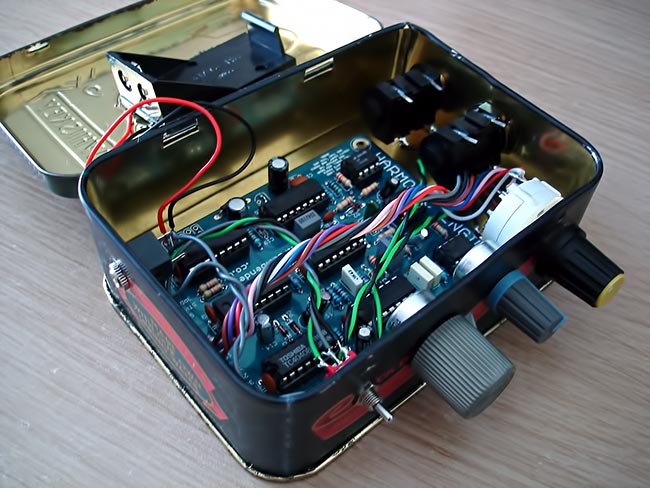
Harmonic Engine built into a tin by Midi Error.
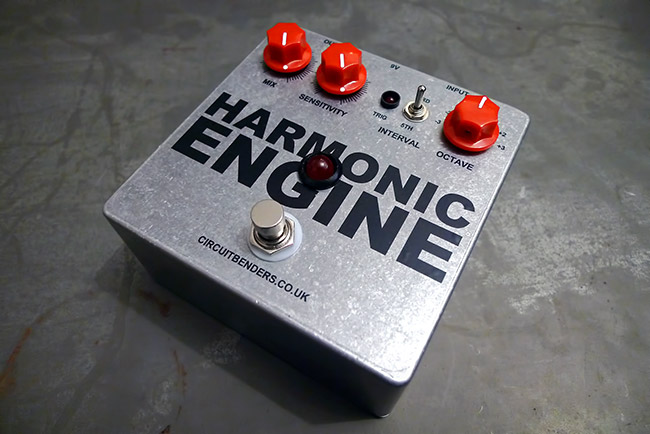
Harmonic engine guitar pedal.
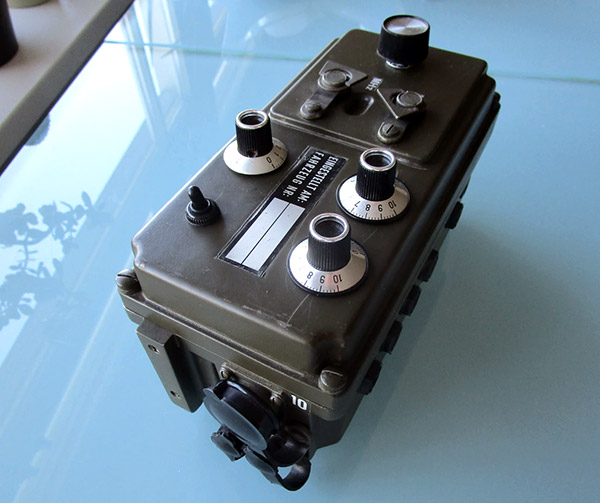
Harmonic Engine built into a case from some kind of high frequency military communications gear,
by Robin Sutcliffe






